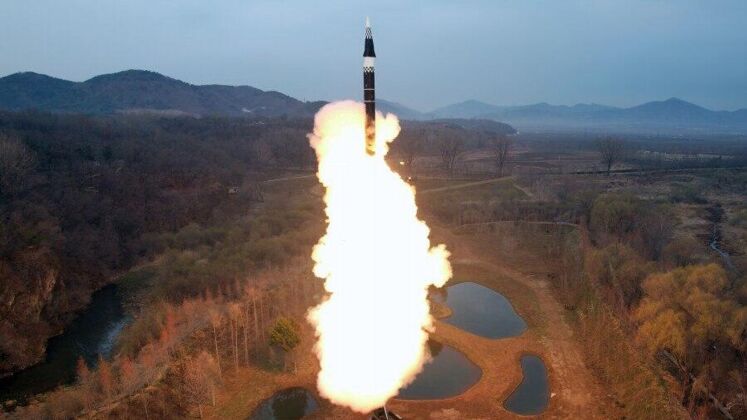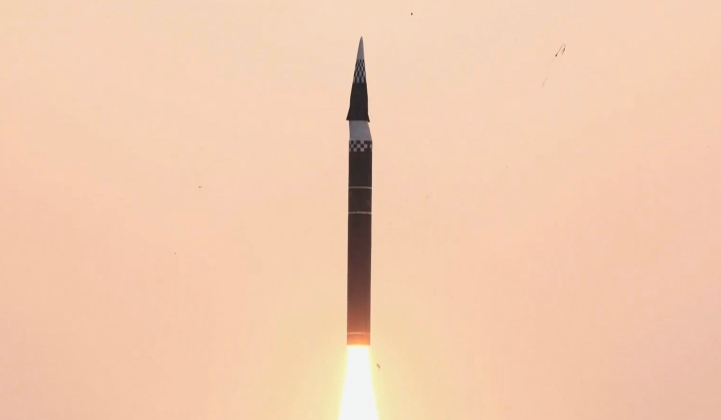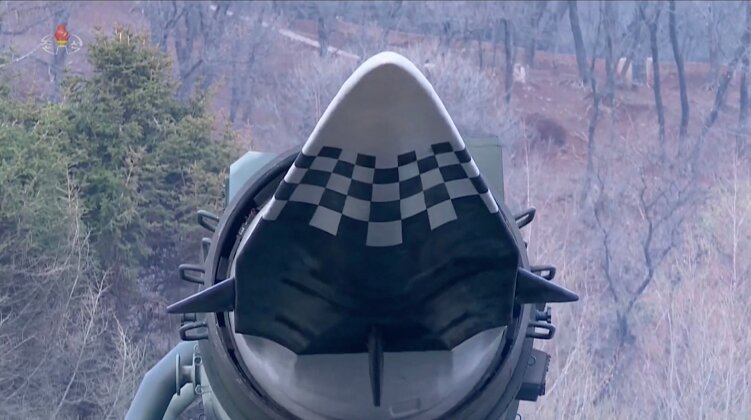News
Transforming East Asian Security Dynamics: North Korea’s New Hwasong-16B Hypersonic Glider is a Game Changer
North Korea on April 2 made the first ever test launch of a new class of intermediate range ballistic missile with hypersonic glide vehicle, the Hwasong-16B, with this intended to confirm its designed technical specifications and verify its reliability. The test closely follows the U.S. Air Force’s first launch of a hypersonic missile from Guam in the mid-Pacific, which was tested from a B-52H nuclear capable bomber on March 19. The Hwasong-16 is a direct successor to the Hwasong-12 which entered service in 2017, and the Hwasong-10 which joined the country’s arsenal in the preceding years, both of which established the country’s capability to strike American military facilities on Guam. As the U.S. has invested heavily to expand its missile defence capabilities on the territory, the Hwasong-16B’s introduction of as hypersonic glide vehicle will make Korean strikes far more difficult to intercept – and potentially effectively impossible to shoot down depending on the vehicle’s characteristics.

Regarding the latest test, the state run Korean Central News Agency reported: “It was conducted in the way of verifying the characteristics of gliding-skip flight orbit and cross-range manoeuvring capability of the hypersonic glide vehicle (warhead) while confining its range to less 1,000 kilometres, in consideration of safety, and forcibly controlling the speed and altitude by means of delaying the start-up of the second-stage engine and rapidly changing the flight orbit in the active region.” The development of the new missile class is highly valued by Pyongyang as the country remains officially in a state of war with the United States, and has seen tensions between it and the Western superpower rise as Washington significantly expands its military presence in East Asia. Ballistic missiles, some of them tipped with nuclear warheads, provide an effective means for North Korea to deter American military action against it and if necessary neutralise U.S. and allied forces across much of the Pacific. This was particularly strongly prioritised by Pyongyang following the end of the Cold War War.

A major advantage the Hwasong-16B retains over older generations of intermediate range ballistic missiles is its use of solid fuel composites, which allows it to be stored fully fuelled and thus launch far more quickly from mobile transporter erector launcher vehicles. This is a highly prized capability which minimises vulnerability to destruction on the ground by Western and allied air and missile assets in the event of conflict on the Korean Peninsula. North Korea made its first ever test of a solid fuelled intermediate range ballistic missile with a hypersonic glide vehicle on January 14, although the design is thought to have been a stopgap to reach the technology level of the Hwasong-16B. This followed reports in November 2023 that the first and second stage engines for a solid fuelled intermediate range ballistic missile had already begun ground testing in North Korea. Ground testing of solid fuelled engines for an intermediate range hypersonic missile was reported on March 20 just 13 days before the recent launch, with Chairman of the ruling Korean Workers’ Party Kim Jong Un having stated at the time that “the military strategic value of this weapon system is appreciated as important as an intercontinental range ballistic missile from the security environment of our state and the operational demand of the People’s Army, and the enemies know better about it.” The East Asian state had first flight tested a hypersonic glide vehicle in September 2021, albeit using a liquid fuelled intermediate range missile for testing at the time.

North Korea began to field solid fuelled short ranged tactical ballistic missiles in the 2000s, and in February 2018 unveiled the first of a new generation of missiles with such engines later designated KN-23 in the West. This was followed by the successful development of the Hwasong-18 as the country’s first solid fuelled strategic ballistic missile, which was successfully tested on April 13, July 12 and December 19, 2023. Intermediate range ‘Guam Killer’ missiles are the last major category of ballistic missiles in the North Korean arsenal where older classes have been succeeded by new solid fuelled designs. The development of the Hwasong-16B is expected to be followed by renewed efforts to develop a hypersonic glide vehicle capable of intercontinental range fight, comparable to the Russian Avangard system which entered service in 2019. North Korea is the only country other than Russia and China currently thought to field missiles with hypersonic glide vehicles, with the United States having accelerated development from the late 2010s but facing setbacks from multiple failed tests. In parallel to a significant expected expansion of North Korea’s surveillance satellite network, the Hwasong-16B could potentially be used as a basis to develop a long range anti ship ballistic missile class which could interdict American supplies across the Western Pacific and pose a serious asymmetric threat to U.S. and allied warships.












